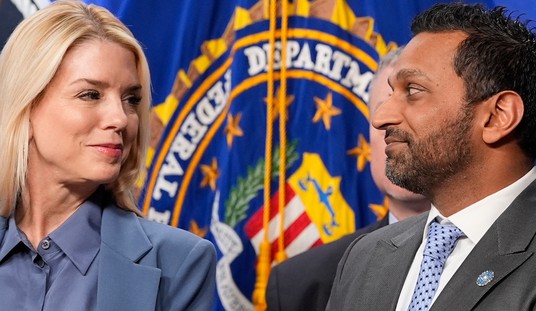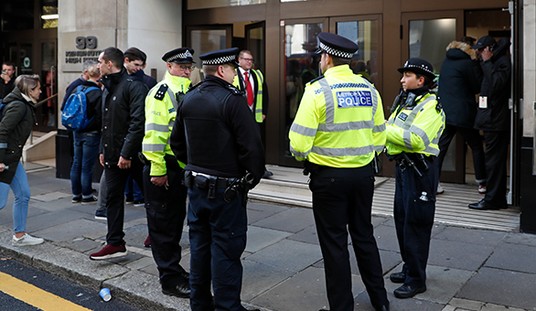Can an executive order bind a successor? The Supreme Court decided that it can, at least under certain circumstances, in its widely anticipated decision on the Trump administration’s attempts to end the Deferred Action for Childhood Arrivals (DACA) program. In a 5-4 decision and opinion authored by Chief Justice John Roberts, the court ruled that Donald Trump’s policy countering the Barack Obama prosecutorial discretion EO that created DACA was “arbitrary and capricious,” but also left the option open to try again:
JUST IN: The Supreme Court blocked the Trump administration's attempt to end DACA, an Obama-era program that protects hundreds of thousands of immigrants brought to the US as children from deportation. https://t.co/twC7s2LMXj pic.twitter.com/6mdHzrH7QM
— CNN Newsroom (@CNNnewsroom) June 18, 2020
The Supreme Court on Thursday delivered a blow to President Trump’s immigration agenda, ruling the administration’s attempt to dismantle an Obama-era program that protects young undocumented immigrants from deportation was unlawful.
With its ruling, the high court provided a lifeline to nearly 700,000 immigrants whose future in the United States hung in the balance while a yearslong legal battle over the Deferred Action for Childhood Arrivals (DACA) program moved through the courts.
Chief Justice John Roberts delivered the opinion for the court, writing that the Trump administration’s decision to unwind the program was “arbitrary and capricious” under the Administrative Procedure Act.
Note well that this leaves the issue of DACA itself undecided. “We do not decide whether DACA or its rescission are sound policies,” Roberts wrote in what is the crux of this hair-splitting exercise. The administration is free to reverse the prosecutorial discretion policy, but the Department of Homeland Security has to comply with the APA first regardless of whether Trump ordered it or not through an EO:
We address only whether the agency complied with the procedural requirement that it provide a reasoned explanation for its action. Here the agency failed to consider the conspicuous issues of whether to retain forbearance and what if anything to do about the hardship to DACA recipients. That dual failure raises doubts about whether the agency appreciated the scope of its discretion or exercised that discretion in a reasonable manner. The appropriate recourse is therefore to remand to DHS so that it may consider the problem anew.
That alarmed Justice Sonia Sotomayor, who wanted the court to block any attempt to roll back DACA permanently on the basis of “disproportionate impact”:
Next, the plurality minimizes the disproportionate impact of the rescission decision on Latinos after considering this point in isolation. Ante, at 28 (“Were this fact sufficient to state a claim, virtually any generally applicable immigration policy could be challenged on equal protection grounds”). But the impact of the policy decision must be viewed in the context of the President’s public statements on and off the campaign trail. At the motion-to-dismiss stage, I would not so readily dismiss the allegation that an executive decision disproportionately harms the same racial group that the President branded as less desirable mere months earlier.
What, pray tell, would be the disparate impact of a policy of prosecution of immigration cases — and how does that differ from the disparate impact of non-prosecution? Both are executive policy decisions on prosecutorial discretion, and both involve the same group of people. This argument isn’t a judicial objection — it’s an argument of political advocacy. Sotomayor wants a particular policy outcome, and wants to permanently make one president’s policy decision binding on successors to do it.
Justice Clarence Thomas points out this hypocrisy in his dissent. He offers a warning about the “perverse incentives” that this decision will have on outgoing administrations that want to create mischief in transitions, especially when the presidency changes parties:
DHS created DACA during the Obama administration without any statutory authorization and without going through the requisite rulemaking process. As a result, the program was unlawful from its inception. The majority does not even attempt to explain why a court has the authority to scrutinize an agency’s policy reasons for rescinding an unlawful program under the arbitrary and capricious microscope. The decision to countermand an unlawful agency action is clearly reasonable. So long as the agency’s determination of illegality is sound, our review should be at an end.
Today’s decision must be recognized for what it is: an effort to avoid a politically controversial but legally correct decision. The Court could have made clear that the solution respondents seek must come from the Legislative Branch. Instead, the majority has decided to prolong DHS’ initial overreach by providing a stopgap measure of its own. In doing so, it has given the green light for future political battles to be fought in this Court rather than where they rightfully belong—the political branches. Such timidity forsakes the Court’s duty to apply the law according to neutral principles, and the ripple effects of the majority’s error will be felt throughout our system of self-government.
Perhaps even more unfortunately, the majority’s holding creates perverse incentives, particularly for outgoing administrations. Under the auspices of today’s decision, administrations can bind their successors by unlawfully adopting significant legal changes through Executive Branch agency memoranda. Even if the agency lacked authority to effectuate the changes, the changes cannot be undone by the same agency in a successor administration unless the successor provides sufficient policy justifications to the satisfaction of this Court. In other words, the majority erroneously holds that the agency is not only permitted, but required, to continue administering unlawful programs that it inherited from a previous administration. I respectfully dissent in part.
Indeed. The court should have ruled that the original program also violated the APA and put an end to this — and forced Congress to deal with its failures.
Where does this leave Trump and the administration? They can go through the rulemaking process again, this time dotting Is and crossing Ts more explicitly, to end DACA. That would put the effort square in the middle of an election, however, and it would only end up back in court again. That would be a lot of risk for little immediate reward.
However, this might be more valuable for Trump as an election-year argument. He could blame the courts for blocking his efforts to fix immigration issues and making the judiciary even more of a campaign focus than it would otherwise be. If voters really want immigration and law-and-order policies implemented correctly without judicial activists blocking progress, Trump can argue, voters need him in place to pick the next two or three SCOTUS justices when those openings occur. Plus, Trump can argue, he needs a Republican-controlled Senate to confirm them.
The Supreme Court handed Trump a big lemon today. It’s up to Trump to make lemonade out of it.
Update: Trump is already squeezing the lemon:
https://twitter.com/realDonaldTrump/status/1273633632742191106
And, somewhat more whimsically:
https://twitter.com/realDonaldTrump/status/1273634152433188865








Join the conversation as a VIP Member